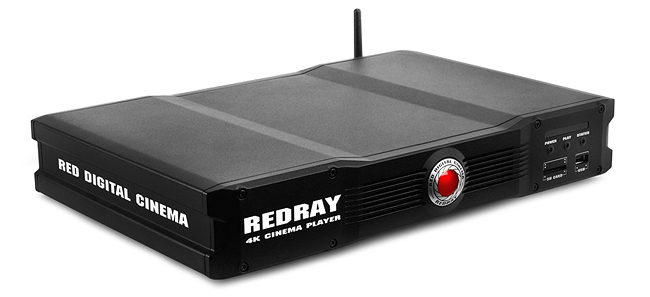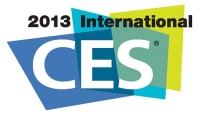As you might expect at this year’s Consumer Electronics Show, 4K was all the rage. All of the major leading flat panel display companies were showing 4K Ultra HD product at the show, including Sony, LG, Samsung, Toshiba, Vizio and others. Sizes for actual consumer-bound product ranged from 50-inch “entry level” models to huge displays with over 80-plus-inch diagonals. Naturally, they all look fantastic – just as they did at last year’s CES. The catch, of course, is that the market for these displays is really only the super enthusiast – those very high-end consumers willing to pay prices ranging up to well over $20,000 for such a device. All of the manufacturers claimed that their models will be “more affordable than expected,” but few were willing to quote specific price ranges. LG did indicate that they intend to have an 84-inch OLED 4K set available in 2013 for around $12,000, but that’s still well outside the price range for all but the most affluent early adopters.
Of course, the problem with 4K Ultra HD isn’t just that the displays themselves will remain exorbitantly expensive for the next few years at least – there’s also the problem of having native 4K video content to view on them. Sony has pledged to begin offering 4K film titles for their 4K display customers starting this summer, via their own 4K video distribution service. The company hasn’t specified exactly how this service will work, but it would seem likely that some kind of special Internet-connected set-top box will be involved, employing a secure digital streaming system to deliver content from Sony Pictures servers. There was unofficial chatter at the show that perhaps the box might include a Blu-ray drive – so if you have the Sony Blu-ray version of a particular title for example, the disc itself would unlock a 4K stream delivered to the box digitally. Watch for Sony to make official announcements in the next few months.
Don’t look for 4K broadcasting to begin anytime soon either – at least in the States (though they are soon to begin in Japan and Korea). In the early days of HDTV, you’d occasionally see limited “test” broadcasts, usually live sporting events like the Super Bowl. But while local terrestrial demo transmissions are already happening on a limited basis (including at CES this year), it’s likely to be at least a year, perhaps two, before more widespread broadcasts begin in the United States, as the Federal Communications Commission (FCC) has yet to approve a 4K broadcast standard. Realistically, industry experts we’ve checked with don’t expect 4K transmission to become common until at 2016 or 2017.
However, one company that seems to be making efforts to address the 4K content problem head on (and actually had demonstration hardware on display at CES) is RED – which already specializes in professional 4K camera and hard drive systems for theatrical film production and exhibition. They were showing their new REDRAY playback device at CES, which looks for all the world like a typical DVR. It was initially meant to be a full 4K playback device for use by independent filmmakers, but RED is gearing up to market the device to high-end home theater consumers as well. Keep in mind, this is not a disc-based system nor is it a format unto itself – it’s simply a device that plays 4K .RED format digital files in both 2D and 3D. It connects to the display via a standard HDMI 1.4 cable and purports to deliver 4K content at less than the average data rate of Blu-ray. RED claims to be working with “all the big cinema libraries” in order to have 4K movie content to deliver. And here’s the clincher: The player will set you back less than $1500. Let’s face it – if you’re already willing to spend $10K and up for a 4K display, what’s another grand to watch content? The player itself was on display and working in the Toshiba booth at the show. You can see what the unit looks like in the picture below – click here for RED’s webpage with full specs and information on this device, here for a page on the RED site with an Engadget video interview on the product and here for arstechnica’s report on the device.

To help support sales of Sony’s 4K Ultra HD displays in the meantime, Sony Pictures Home Entertainment has announced a new line of “Mastered in 4K” Blu-ray titles. These aren’t actual 4K titles, but are essentially the Blu-ray 1080p equivalent of their previous “Superbit” DVDs. Sony says all of their “Mastered in 4K” titles will be sourced from 4K studio masters and will offer higher bitrates, which should allow for a somewhat improved picture when upconverted to 4K by the display. Planned titles will include The Amazing Spider-Man, Total Recall, The Karate Kid, Battle: Los Angeles and The Other Guys – part of an initial wave of ten titles planned to be available this Spring. It’s hard to see how these will really stand out from existing Blu-rays, but who knows – until Sony figures out a better way to deliver 4K content to their displays one supposes this makes a certain amount of sense.
Speaking of HD movie content, the Digital Entertainment Group (DEG) announced a new industry initiative at CES to offer free UltraViolet movies (specifically called an “UltraViolet Movie Starter Pack”) when you buy a new UV-compatible device – either a smart TV or Blu-ray player from LG, Panasonic, Philips, Samsung, Sony, Toshiba or Vizio. This is apparently the first digital cross-promotional effort of its kind. You’ll get UV redemption codes for ten movies when you purchase an HDTV and five when you purchase a BD player. These can be redeemed from participating movie delivery services, including VUDU, Nook Video, Flixster and Best Buy’s CinemaNow. Combined with the international expansion of UV into countries like Australia, New Zealand, France, Germany and Ireland in 2013, this effort is designed to help greatly expand UV’s registered customer base beyond the nine million households already participating. Studios involved include Warner Home Video, Paramount Home Media Distribution, Sony Pictures Home Entertainment, Universal Studios Home Entertainment, Lionsgate and 20th Century Fox Home Entertainment.
Speaking of the DEG, the group also released its annual statistics report on the strength of the home video industry as of the end of 2012. Overall U.S. consumer spending on packaged media (in other words, physical discs) was down about 5.5% from 2011, but digital video on demand (VOD) was up 28.5% and total electronic sell through (EST) was up 35%. With losses in all other areas factored in (including declining physical media rentals) total U.S. consumer spending on home entertainment was up about .5% for the year with a total of about $18 billion. Highlights from the DEG’s report include:
- Blu-ray Disc spending rose nearly 10% for the year. Spending on Blu-ray catalog titles jumped 25% for the year.
- Consumers also increasingly purchased their entertainment via EST. Consumer spending on EST climbed 35% compared to 2011. Total digital distribution spending, EST and VOD combined, grew 28% for the same period. Total digital now accounts for nearly 30% of the domestic home video market, up from 19% compared to 2011.
- Consumers embraced UltraViolet as a substantial number of new titles became available. To date, more than nine million UltraViolet accounts have been created, more than double the number as of June 2012, and 8,500+ UltraViolet-enabled titles are now available from nine major content providers: Anchor Bay Entertainment, BBC, DreamWorks Animation, Lionsgate, Paramount Home Media Distribution, Sony Pictures Home Entertainment, Twentieth Century Fox Home Entertainment, Universal Studios Home Entertainment and Warner Bros. Home Entertainment.
- Consumers are now making Blu-ray Disc players integral to their consumer home entertainment experience. The number of Blu-ray homes continues to steadily grow, climbing 7% for the year (including BD set-tops, PS3s and HTiBs.) Total household penetration of all Blu-ray compatible devices now stands at close to 51 million U.S. homes according to numbers compiled by the DEG with input from retail tracking sources.
[Editor’s Note: That’s about 45% of the total U.S. TV household market which stands at approximately 114.2 million.]
- Further, consumers purchased more than 39 million HDTVs in 2012. HDTV penetration is now at more than 108.4 million U.S. households according to numbers compiled by the DEG with input from retail tracking sources.
So that’s the status of the home video industry from the DEG. Now let’s take a look at the latest in glasses-free 3D from CES...




